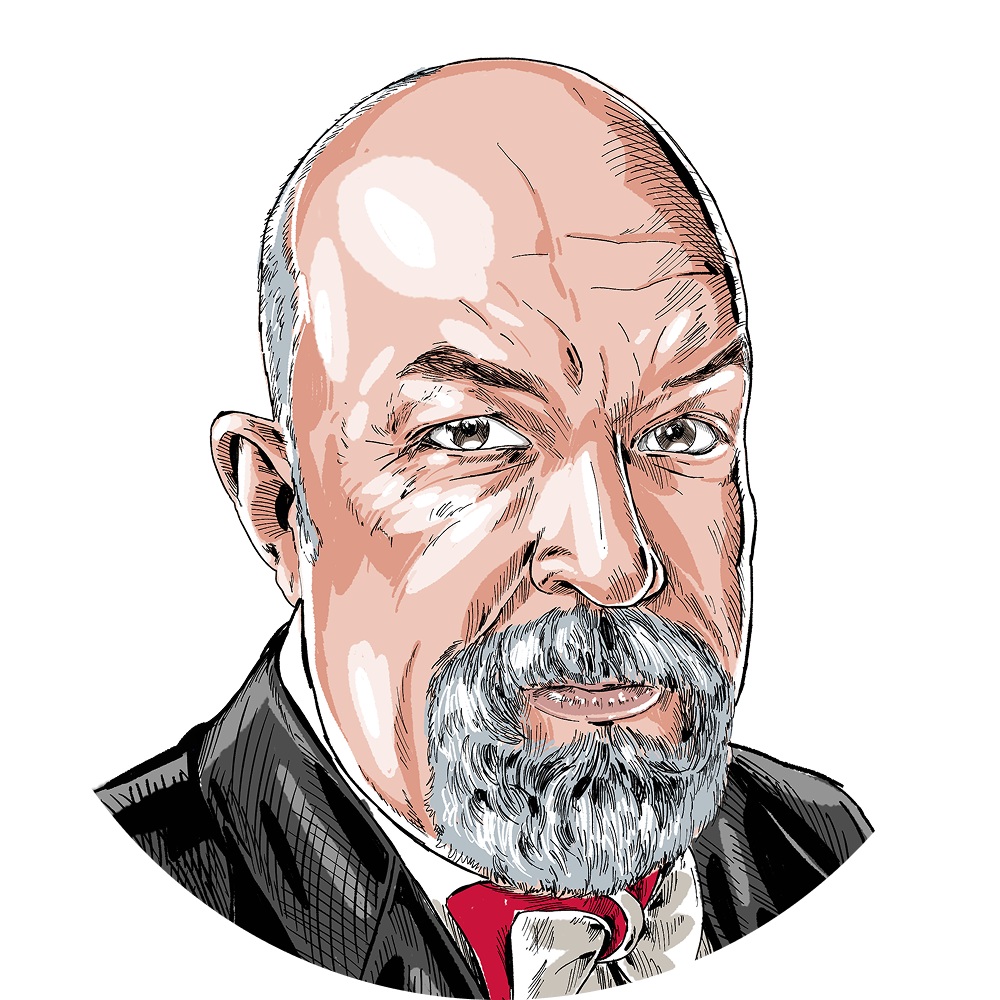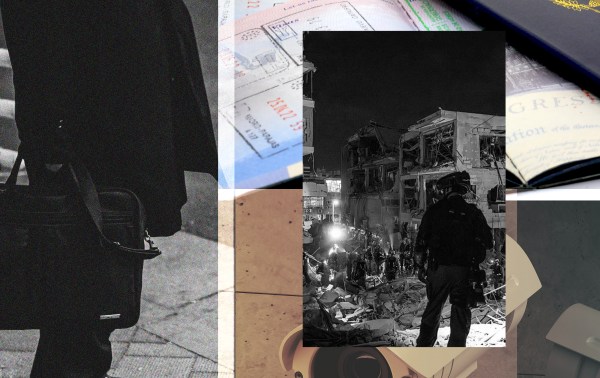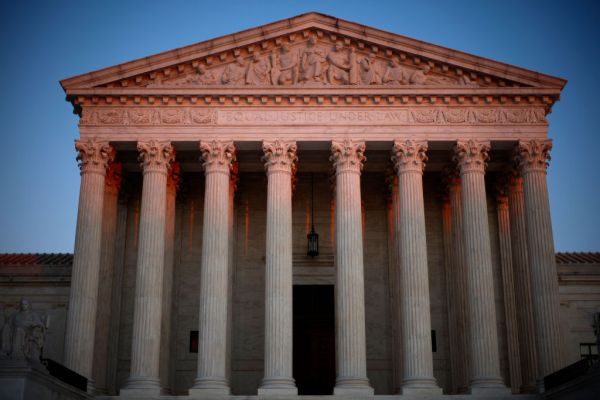What is a bank? How does a bank work?
You’d think that these would be obvious and easily answered questions, especially now that everybody with a byline is a five-minute expert on Silicon Valley Bank. (My editors have just informed me that The Dispatch was an SVB customer and would like that noted in the interest of full disclosure, which, now, it has been.) But, as usual, it is a little more complicated than the politicians would have you believe.
For years, we’ve heard progressive (and sometimes right-wing populist) politicians and their media friends insist that the 2007-08 financial crisis could have been avoided if not for the 1999 repeal of the Glass-Steagall Act, a package of Depression-era banking regulations that, among other things, created the FDIC. That claim is, and always has been, almost complete poppycock. Glass-Steagall regulated the affairs of commercial banks—meaning the kind of bank where regular people open checking and savings accounts, take out personal loans, etc. But the firms that were at the center of the 2007-08 financial crisis were a different kind of creature entirely: They were mostly pure-play investment banks, which are financial institutions that provide services to big corporate and institutional customers, which do not have regular-Joe depositors and whose activities are not insured by the FDIC, which doesn’t insure investments, only deposits. Bear Stearns and Lehman Brothers were investment banks; AIG was an insurance company and diversified financial-services conglomerate; Morgan Stanley and Goldman Sachs were investment banks that became commercial banks as part of the Federal Reserve’s stabilization efforts, and Goldman insists that it never needed a bailout but wasn’t going to forgo the offer of nearly free federal money; etc. The repeal of Glass-Steagall meant that investment banks and commercial banks could, to an extent, get into one another’s businesses, but that wasn’t much of a factor in the 2007-08 financial crisis. A number of FDIC-insured banks did fail in those years—nearly 500 between 2008 and 2013, mostly small institutions you’ve never heard of, but not for reasons that would have been prevented by Glass-Steagall.
Almost nobody in Washington really wants to understand this stuff—they want someone to blame and a policy narrative that fixes such blame in a persuasive way. Political stories are fairy tales, and fairy tales need villains. There was plenty of bad behavior, wishful thinking, short-termism, and self-dealing leading up to the 2007-08 financial crisis, and plenty of bad policy decisions that contributed to it—starting in the 1930s and continuing under presidencies and Congresses controlled by both parties. But the basic true facts of the case don’t offer much in the way of a satisfying moral zing or a black-hats/white-hats narrative, because what happened is that a bunch of investors made a bunch of bad investment decisions, which normally wouldn’t be that big of a deal except for the fact that so many of them had, for a variety of policy and business-practice reasons, made the same bad investment decision.
Which brings us around to SVB.
SVB is a commercial bank, but it has a lot of clients with a lot of money—tech-industry business clients and investors and West Coast rich guys in $18,000 hoodies. The way a commercial bank works is, at a fundamental level, pretty easy to understand: If (and I’ll just make up numbers here) you pay your depositors 3 percent interest and you make 5 percent investing their money, then you’re making money, but if you pay your customers 5 percent on their deposits and make 3 percent investing that money, then you’re hosed. This may look like a can’t-lose proposition to ordinary banking customers, who are used to getting something like 3 percent on their deposits but see bigger returns on their own investments, with the S&P 500 returning an annualized average of almost 12 percent from 1957 to 2021. The thing is, banks can’t just go invest in the S&P 500. In spite of all the talk you may have heard about the “deregulation” of banks in recent years, banking remains one of this country’s most regulated businesses short of nuclear-waste disposal.
For every $1 in deposits on the books, banks have to set aside a portion as a “reserve,” and that reserve has to be invested in very low-risk, low-volatility investments. (At least, in theory: One of the problems contributing to the 2007-08 financial crisis was that mortgage-backed securities and related instruments were engineered to look like they were less risky than they were, so that a lot of weak stuff ended up getting rated as relatively low-risk. This matters because when regulators are calculating a bank’s required capital cushion, $1 million in low-risk bonds counts for more than $1 million in higher-risk bonds. But if the risk ratings are distorted, then it is harder to say how much of a real capital cushion an institution actually has.) And the gold standard of low-risk, low-volatility investments is, of course, Washington’s debt: Treasury bonds and Treasury bills. And SVB had a whole bunch of those, with more than half of its assets invested in Treasury bonds and similar low-risk fixed-income investments.
The problem is that SVB made a lot of those low-risk investments back when we were operating in an economic environment of ultralow interest rates. As crusty old libertarians have been insisting for years, eventually cheap money (in the form of artificially low interest rates and loose government spending) will cause inflation, which will cause higher interest rates, which will cause chaos for businesses that had made business decisions and investments based on the expectation that interest rates would continue to remain low. SVB offers something like a textbook case for crusty old libertarian “I Told You So!”-ism. SVB bought a bunch of Treasury bonds back when interest rates were low: In April 2020, rates were all the way down at 0.65 percent, whereas on Monday the rate was 3.55 percent. Treasury bonds are bought and sold like any other security, and you don’t have to be a financial genius to figure out that nobody is going to want to buy a Treasury bond paying less than 1 percent when the same Treasury is offering new bonds paying 3.55 percent. So the price of those older bonds has, naturally, collapsed.
That isn’t necessarily a big problem—if there is no other trouble at the bank. The bank can just hold onto the bonds and collect the interest until the bonds mature, and, as long as the U.S. government pays its debt, then the banks get their interest and their principal back, and they are no worse off except for having missed the opportunity to earn more money by buying 3.55-percent bonds instead of those 0.65-percent bonds they had. No big deal—unless the bank suddenly needs money, which is what happened at SVB. SVB has a lot of financially sophisticated clients, and those clients knew that the bank was in a weakened financial position, and so they started taking their money out, in part because the FDIC officially insured depositors only up to the first $250,000—and a quarter-mil is piffle to a lot of SVB customers. So SVB was forced to raise cash to pay its depositors by selling off those low-risk investments right as their price was hitting rock-bottom, leading to an original loss of nearly $2 billion. SVB tried to raise $2 billion in new capital to bolster its position, but that just spooked depositors, who then made a real run on the bank in earnest.
In more formal terms, SVB failed because of its mismanagement of “interest-rate risk” and “liquidity risk.” It had too much of its money tied up in its investments, and those investments were too highly correlated with a single factor: interest rates. The combination is a bad one. In SVB’s case, the problem was exacerbated—because almost 90 percent of the bank’s deposits were beyond what the FDIC would insure … until the FDIC stepped in and just decided, against its own policy, to make good on all the deposits.
The upside is that the depositors didn’t lose their money. (Hurray!) The downside is that now, nobody thinks he’ll ever lose money on a bank deposit. The FDIC will step in and make good on any losses no matter what and won’t have to explain why it gave preferential treatment to SVB depositors, meaning that bank managers will not have pressure from depositors to help keep them honest. Franklin D. Roosevelt worried about that very problem (“moral hazard”) way back in the day, which was why he opposed the creation of the FDIC before he changed his mind. It is not clear that this consumer-activism dynamic is very significant, though: Depositor anxiety doesn’t seem to have much effect on how banks are run, customers don’t really seem to shop around based on a bank’s capital-reserve model, and if the relatively sophisticated clients of SVB weren’t proactive enough to keep management on its toes, then the 18.5 million checking-account holders at, say, Chase—ordinary consumers in a country where households have a median balance of $5,300 in the bank—probably aren’t going to be very effective at keeping the money-runners in check.
There are all sorts of good criticisms that can be made of the FDIC in theory and in practice, but, in this case, it seems to have worked. There isn’t any widespread panic producing a run on the banks. If anything, the FDIC worked too well—or at least too extensively: In prior bank collapses, depositors with assets beyond what the FDIC insured didn’t lose everything beyond the ceiling, but typically took a 10 percent to 15 percent haircut. Capitalism is supposed to be a proposition of profits and losses, and those who complain that we have effectively “socialized the losses” when it comes to certain aspects of high finance—or ordinary banking for rich people—are not entirely unjustified in their criticism.
In a different kind of regulatory environment, SVB might have avoided its interest-rate problem by having more investments in higher-yielding assets—and then run into an even worse liquidity crunch the next time there’s a nasty ursine turn in the market.
But here’s a crusty old libertarian thought: We’ve spent most of the 21st century artificially stimulating the economy with artificially low interest rates—with cheap money on easy terms—and there was always going to be a price to pay for doing so. The disruptions associated with COVID-19 may have brought that on earlier and more intensely than we expected, but the worldwide economy is, like politics, a hostage of “events, my dear boy.” Maybe the way going forward isn’t another quarter-century of cheap-money stimulus but a stable policy environment, a reasonable but restrained approach to taxes and regulation, a more effective workforce, fewer barriers to trade and investment, a government focused on the effective provision of public goods rather than pissant culture-war boob-bait, safe streets and decent schools in the cities that are the economic engine of every modern economy, an energy industry not subject to the whimsy of shallow dorm-room radicals, political parties that can go a couple of election cycles without a sore-loser riot or an attempted coup d’état …
That being written, there isn’t any obvious “solution” to problems like this, but there are some reasonably straightforward policy changes that could improve things significantly. There isn’t anything wrong in principle with the FDIC’s insuring deposits of much more than $250,000—or with the FDIC insuring all bank deposits, for that matter. The problem is the ad-hocracy. If Congress were to act and pass a responsible piece of legislation, then the FDIC could simply insure bank deposits of whatever amount, charging institutions an economically appropriate risk-adjusted premium based on the size of its deposits. (The FDIC also should not repeat the mistake of past years when it didn’t collect premiums for a decade, reasoning that it had enough money in its funds to cover any eventuality. More is better in this.) It would be good if the government were to raise banks’ capital-reserve requirements, too, and if it tightened up the rules about what counts as solid capital. We are talking about deposits, not investments. There are all sorts of ways that businesses can do their banking without relying very much on old-fashioned commercial banks–the “shadow banking system” is a real thing–but if you are a risk-averse regulator, you’d probably prefer that most businesses do their banking with banks and that banks take a conservative, diversified approach to fortifying their reserves. SVB was invested in rock-solid Treasury bonds, not rupee-denominated orange-juice futures or some exotic derivative, but its overall position was still poor because of its interest-rate exposure. The lesson there is that there isn’t any single regulatory change that is going to be a good substitute for what banks really need most—which is active oversight—but higher capital requirements would go a long way toward building a more reliable and confidence-inspiring banking system.
Alternatively, we could have six months’ worth of ignorant lectures about “greed” and “casino capitalism” and “fat cats” and not do a damned thing.







Please note that we at The Dispatch hold ourselves, our work, and our commenters to a higher standard than other places on the internet. We welcome comments that foster genuine debate or discussion—including comments critical of us or our work—but responses that include ad hominem attacks on fellow Dispatch members or are intended to stoke fear and anger may be moderated.
With your membership, you only have the ability to comment on The Morning Dispatch articles. Consider upgrading to join the conversation everywhere.